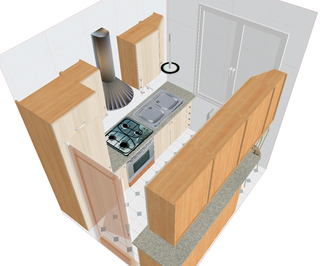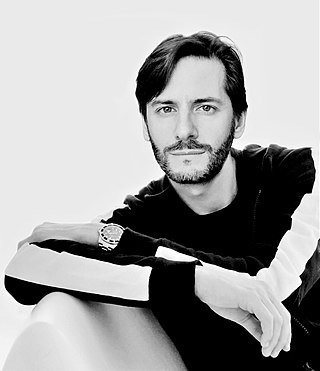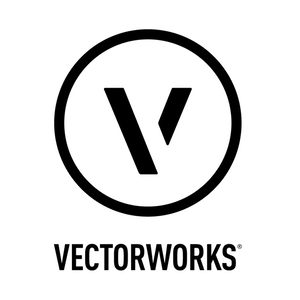
Computer-aided design (CAD) is the use of computers to aid in the creation, modification, analysis, or optimization of a design. This software is used to increase the productivity of the designer, improve the quality of design, improve communications through documentation, and to create a database for manufacturing. Designs made through CAD software help protect products and inventions when used in patent applications. CAD output is often in the form of electronic files for print, machining, or other manufacturing operations. The terms computer-aided drafting (CAD) and computer-aided design and drafting (CADD) are also used.

In computing, a visual programming language, also known as diagrammatic programming, graphical programming or block coding, is a programming language that lets users create programs by manipulating program elements graphically rather than by specifying them textually. A VPL allows programming with visual expressions, spatial arrangements of text and graphic symbols, used either as elements of syntax or secondary notation. For example, many VPLs are based on the idea of "boxes and arrows", where boxes or other screen objects are treated as entities, connected by arrows, lines or arcs which represent relations.
The Maya Embedded Language (MEL) is a scripting language used to simplify tasks in the 3D graphics software Autodesk Maya. Most tasks that can be achieved through Maya's GUI can be achieved with MEL, as well as certain tasks that are not available from the GUI. MEL offers a method of speeding up complicated or repetitive tasks, as well as allowing users to redistribute a specific set of commands to others that may find it useful.

Computer-aided architectural design (CAAD) software programs are the repository of accurate and comprehensive records of buildings and are used by architects and architectural companies for architectural design and architectural engineering. As the latter often involve floor plan designs CAAD software greatly simplifies this task.

Rhinoceros is a commercial 3D computer graphics and computer-aided design (CAD) application software that was developed by TLM, Inc, dba Robert McNeel & Associates, an American, privately held, and employee-owned company that was founded in 1978. Rhinoceros geometry is based on the NURBS mathematical model, which focuses on producing mathematically precise representation of curves and freeform surfaces in computer graphics.
Procedural modeling is an umbrella term for a number of techniques in computer graphics to create 3D models and textures from sets of rules. L-Systems, fractals, and generative modeling are procedural modeling techniques since they apply algorithms for producing scenes. The set of rules may either be embedded into the algorithm, configurable by parameters, or the set of rules is separate from the evaluation engine. The output is called procedural content, which can be used in computer games, films, be uploaded to the internet, or the user may edit the content manually. Procedural models often exhibit database amplification, meaning that large scenes can be generated from a much smaller number of rules. If the employed algorithm produces the same output every time, the output need not be stored. Often, it suffices to start the algorithm with the same random seed to achieve this.

Autodesk Revit is a building information modelling software for architects, structural engineers, mechanical, electrical, and plumbing (MEP) engineers, design for contractors. The original software was developed by Charles River Software, founded in 1997, renamed Revit Technology Corporation in 2000, and acquired by Autodesk in 2002. The software allows users to design a building and structure and its components in 3D, annotate the model with 2D drafting elements, and access building information from the building model's database. Revit is 4D building information modeling application capable with tools to plan and track various stages in the building's lifecycle, from concept to construction and later maintenance and/or demolition.
Architectural design optimization (ADO) is a subfield of engineering that uses optimization methods to study, aid, and solve architectural design problems, such as optimal floorplan layout design, optimal circulation paths between rooms, sustainability and the like. ADO can be achieved through retrofitting, or it can be incorporated within the initial construction a building. Methods of ADO might include the use of metaheuristic, direct search or model-based optimisation. It could also be a more rudimentary process involving identification of a perceived or existing problem with a buildings design in the concept design phase.

Digital Project is a computer-aided design (CAD) software application based on CATIA V5 and developed by Gehry Technologies, a technology company owned by the architect Frank Gehry. Among the changes made by Gehry Technologies to CATIA is a new visual interface suitable for architecture work. With the release of version R5 Digital Project is compatible with CATIA V5R22.
GenerativeComponents is parametric CAD software developed by Bentley Systems, was first introduced in 2003, became increasingly used in practice by early 2005, and was commercially released in November 2007. GenerativeComponents has a strong traditional base of users in academia and at technologically advanced design firms. GenerativeComponents is often referred to by the nickname of 'GC'. GC epitomizes the quest to bring parametric modeling capabilities of 3D solid modeling into architectural design, seeking to provide greater fluidity and fluency than mechanical 3D solid modeling.

Architectural geometry is an area of research which combines applied geometry and architecture, which looks at the design, analysis and manufacture processes. It lies at the core of architectural design and strongly challenges contemporary practice, the so-called architectural practice of the digital age.

Geometrical design (GD) is a branch of computational geometry. It deals with the construction and representation of free-form curves, surfaces, or volumes and is closely related to geometric modeling. Core problems are curve and surface modelling and representation. GD studies especially the construction and manipulation of curves and surfaces given by a set of points using polynomial, rational, piecewise polynomial, or piecewise rational methods. The most important instruments here are parametric curves and parametric surfaces, such as Bézier curves, spline curves and surfaces. An important non-parametric approach is the level-set method.

OpenSCAD is a free software application for creating solid 3D computer-aided design (CAD) objects. It is a script-only based modeller that uses its own description language; the 3D preview can be manipulated interactively, but cannot be interactively modified in 3D. Instead, an OpenSCAD script specifies geometric primitives and defines how they are modified and combined to render a 3D model. As such, the program performs constructive solid geometry (CSG). OpenSCAD is available for Windows, Linux, and macOS.

Grasshopper is a visual programming language and environment that runs within the Rhinoceros 3D computer-aided design (CAD) application. The program was created by David Rutten at Robert McNeel & Associates. Programs are created by dragging components onto a canvas. The outputs of these components are then connected to the inputs of subsequent components.
Open-source architecture is an emerging paradigm that advocates new procedures in imagination and formation of virtual and real spaces within a universal infrastructure. Drawing from references as diverse as open-source culture, modular design, avant-garde architectural, science fiction, language theory, and neuro-surgery, it adopts an inclusive approach as per spatial design towards a collaborative use of design and design tools by professionals and ordinary citizen users. The umbrella term citizen-centered design harnesses the notion of open-source architecture, which in itself involves the non-building architecture of computer networks, and goes beyond it to the movement that encompass the building design professions, as a whole.

Alibre Design is a 3D parametric computer aided design software suite developed by Alibre for Microsoft Windows. Available in fifteen languages. Alibre is a brand of Alibre, LLC, a company based in Texas.

Parametric design is a design method in which features, such as building elements and engineering components, are shaped based on algorithmic processes rather than direct manipulation. In this approach, parameters and rules establish the relationship between design intent and design response. The term parametric refers to the input parameters that are fed into the algorithms.

Arturo Tedeschi is an Italian architect, computational designer and writer. He's the founder of the homonymous architecture practice and design consulting which promotes a new kind of algorithmic-based design. His work includes techniques such as Algorithms-Aided Design (AAD), CNC milling, robotic milling, 3D printing, artificial intelligence, virtual reality. Arturo Tedeschi is the author of the books: Architettura Parametrica,Parametric Architecture with Grasshopper and AAD Algorithms-Aided Design, a reference book on algorithmic modelling based on the Grasshopper platform.

Vectorworks, Inc. is a U.S.-based software development company that focuses on CAD and BIM software for the architecture, engineering, and construction (AEC), landscape, and entertainment industries. Vectorworks is owned by the Nemetschek Group, a multinational company. It operates as an independent subsidiary of Nemetschek Group.













